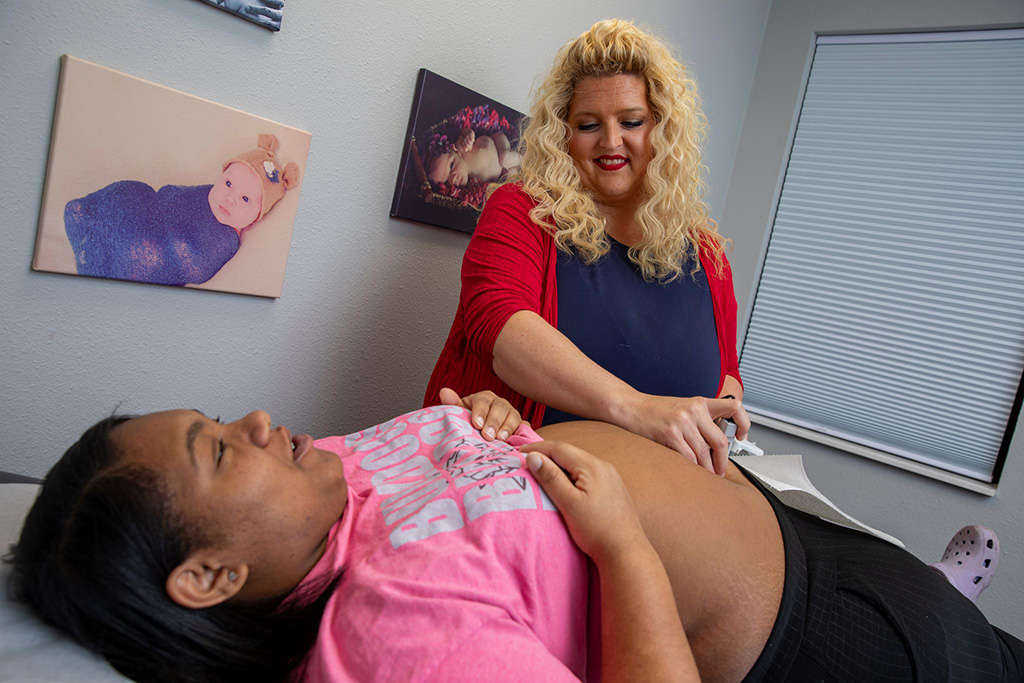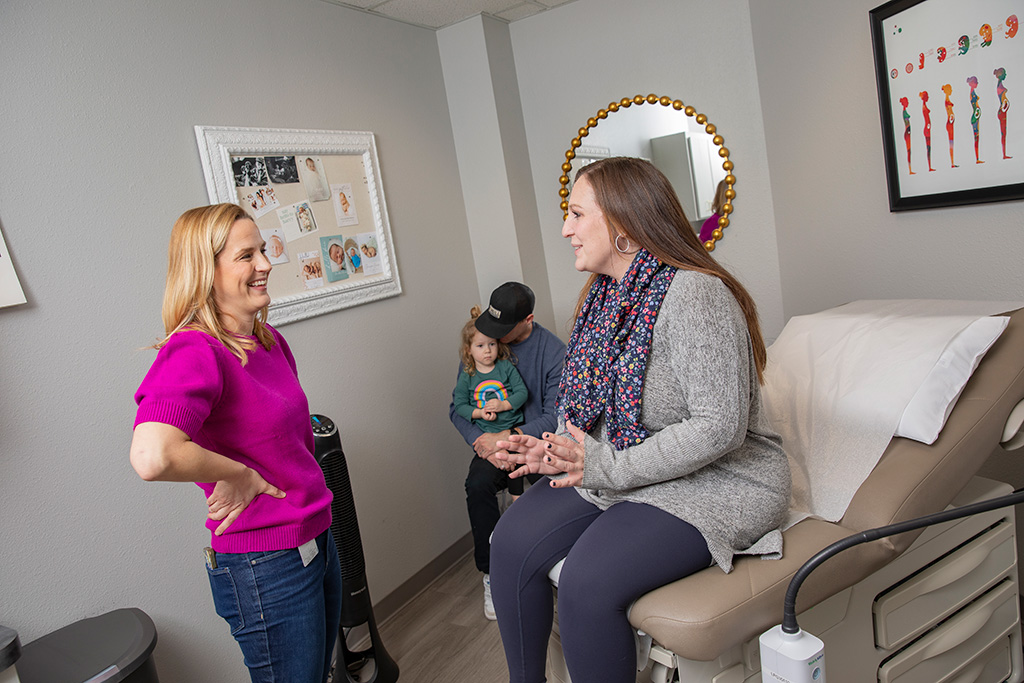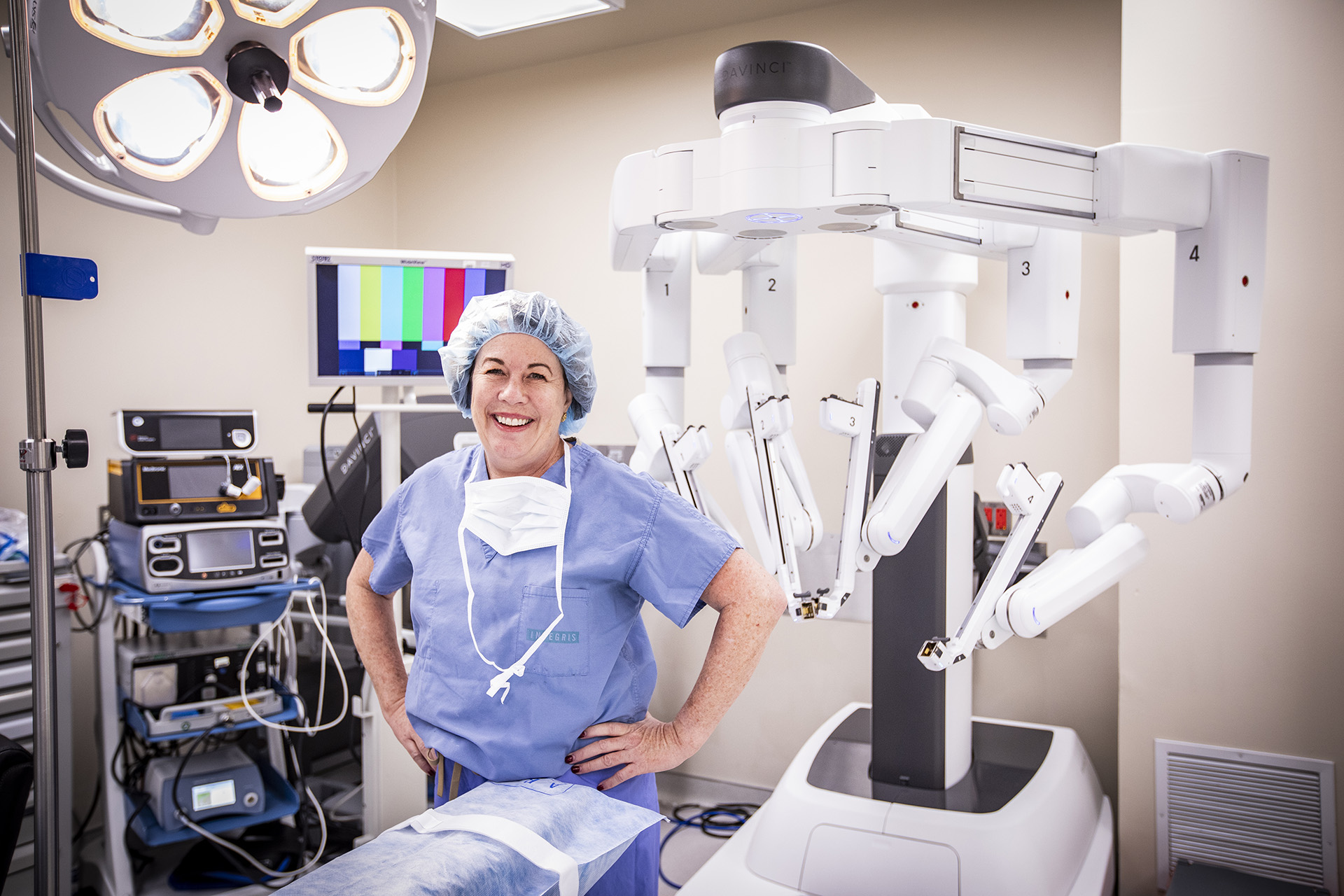Annual Well Woman Exams
A well-woman exam is one of the most important steps that women of all ages can take to protect their health. This is an annual preventive screening of breast and gynecological diseases. During the visit, your doctor will discuss your health and lifestyle behaviors and will perform a physical exam of your breasts and pelvis.
Preconception Counseling
Preconception care is taking steps to ensure the health of your baby before you become pregnant. This is the time to check for any potential risks to you and your baby during pregnancy, and to discuss and address any medical issues you may have before you get pregnant. This is also the perfect time to ask your doctor all of the questions on your mind, whether it’s health concerns that run in your family, diet and exercise during pregnancy or anything else you want to know.
Contraception Counseling
There are many different forms of birth control available to women today, and the decision about which type is best for each individual depends on many variables, including past medical history, ease of use, incidence of side effects, cost and risks. Our providers are specialists in all forms of contraception and can help you determine which option may be the best for you.
Pap Smears
A Pap smear is a screening procedure for cervical cancer. It tests for the presence of precancerous or cancerous cells on the cervix, which is the opening of the uterus. It’s named after the doctor who discovered it, Georgios Papanikolaou. It’s a quick procedure, during which cells from your cervix are gently scraped away and then examined at a lab for abnormal growth.
STD Testing
For women, many STDs, or sexually transmitted diseases, show no signs or symptoms. In fact, that’s why many experts prefer the term sexually transmitted infections (STIs), because you can have the infection without disease symptoms. If you think you need testing, discuss it with your doctor. STD (STI) testing is not always a standard part of a gynecological exam.
Breast Cancer Screening
Breast cancer screening tests are performed in order to find breast cancer when the tumors are too small to feel and before any symptoms or warning signs occur. Early detection is key to successful treatment.
Pelvic Ultrasound
This diagnostic exam is used to assess organs and structures within the female pelvis. A probe is used and may be placed on the abdomen or inserted into the vagina. The ultrasound uses sound waves to produce pictures of the uterus, cervix, vagina, fallopian tubes and ovaries.
Bone Density Testing
This test enables your doctor to diagnose osteoporosis before a broken bone occurs, and will tell you if you have normal bone density, low bone density or osteopenia, or osteoporosis. It can also tell you if your bone density is improving, or if your osteoporosis medication is working as it should.
Abnormal Periods (bleeding)
An abnormal period can mean many things: heavy bleeding during menstruation (soaking through a tampon or pad in 1-2 hours); irregular or infrequent periods; short menstrual cycles; clotting or thick menstrual blood. A visit to your doctor can rule out any serious underlying problems and help your cycle become more regular or comfortable.
Fibroids
Fibroids are (usually) benign tumors that grow on the wall of the uterus or womb. Fibroids are also called leiomyoma or just myoma. They can be tiny, the size of a seed, or large, the size of a grapefruit, and can occur one at a time or in multiples. They are most common in women in their 30s and 40s and often decrease after menopause. Fibroids can cause discomfort, including heavy menstrual bleeding, rectal pressure and frequent urination. Treatment for fibroids can include medications or surgery.
Ovarian Cysts & Tumors
A woman’s ovaries are two small organs, located on either side of the uterus. They are the size of almonds, and during ovulation they grow an egg inside a sac, release the egg and the sac then dissolves. If the sac does not dissolve, it can fill with fluid or blood and become a cyst. There are several types of cysts, and most are benign, but may cause discomfort, or symptoms such as unusual hair growth, frequent urination, abdominal bloating and pressure, and fever. If you have these symptoms, see your doctor as soon as possible.
A tumor is a growth of abnormal tissue and can occur anywhere on the body. Some tumors are malignant, and some are not. Like cysts, ovarian tumors may cause minor symptoms and can be very hard to feel, even during a physical exam. Tumors can also produce symptoms like abdominal swelling, bloating, pressure and pain, trouble eating or feeling stuffed, menstrual irregularities, urgent or frequent urination or painful intercourse. Unusual symptoms or changes in your menstrual cycle are things you should report to your doctor immediately.
Pelvic Organ Prolapse
Pelvic organ prolapse occurs when one or more of the organs in the pelvis drops from its usual place, and creates pressure on the walls of the vagina. More than one organ can prolapse at a time, and such prolapses are most often linked to the strain of childbirth. Organs that may prolapse are the bladder, uterus, vagina, small intestine and rectum.
Endometriosis
This often painful disorder occurs when tissue that normally lines the inside of your uterus begins growing outside of it. Endometriosis can also occur on the bladder, bowel, intestines, appendix or rectum, although this is less common.
Vaginal Discharge
Most vaginal discharge is perfectly normal and serves the important purpose of keeping your vagina clean and infection-free. The amount, color, thickness and odor can vary greatly depending on when during your menstrual cycle the discharge happens. Vaginal discharge can also indicate infection if it looks or smells markedly different than usual or if it is accompanied by itching or burning.
Bladder Infection
Bladder infections, also sometimes called cystitis, urinary tract infections, or UTIs, are bacterial infections. Other organs that can be involved in a UTI are the kidneys and ureters. When bacteria makes its way up the urethra and into the bladder, infection can occur, but such infections are not usually serious and are easily treatable if caught right away.
Menopause & Hormone Treatment
Menopause is a natural, biological process and at its simplest is described as having occurred 12 months after your last menstrual period, and marks the end of menstrual cycles. Each individual experiences the period leading up to menopause (perimenopause) and menopause itself differently.
Its physical and emotional symptoms can be slight, or challenging, and can include hot flashes, sleep disruption, night sweats, weight gain, vaginal dryness, emotional volatility, lower energy and thinning hair and dry skin.
Hormone treatment can ease many of the symptoms of perimenopause and menopause.
Urinary Incontinence
Stress urinary incontinence is the involuntary release of urine when coughing, laughing, sneezing or during physical activity. Stress urinary incontinence is most commonly caused by weakened pelvic floor muscles due to childbirth. Treatment options include TVT or TOT sling procedures, both of which are outpatient procedures that take about 30 minutes to perform. Bladder slings support the urethra like a hammock, preventing leakage.
Healthy Living
Our wish for every patient is a long, happy and healthy life. Our team is here to help you create your own healthy living roadmap, which includes maintaining a healthy weight, enjoying a delicious and nutrient rich diet, making time for exercise, managing stress and getting plenty of sleep. We will work with you to create strategies for success, whether you are a new mother, a college student or a great-grandmother.
Laparoscopic Surgery
This minimally invasive surgical technique involves making multiple, small incisions rather than one large one and can be useful in diagnosing endometriosis, uterine fibroids, ovarian cysts or tumors, ectopic pregnancy, reproductive cancers or pelvic inflammatory disease. Laparoscopic surgery can also be used for hysterectomy, removal of the ovaries or ovarian cysts, removing fibroids, the treatment of endometriosis and pelvic organ prolapse.
Endometrial Ablation
This procedure, which requires no incisions, surgically destroys the endometrium (lining of the uterus), is used to help reduce menstrual flow and for some women, it will stop the flow completely. Some types of endometrial ablation must be performed in an operating room, others can be performed in a doctor’s office.
Your doctor might suggest this treatment for you if you have extremely heavy menstrual periods, often defined as soaking a pad or tampon every two hours or less, bleeding that lasts more than eight days, or if you have anemia from blood loss.
LEEP Procedure
LEEP stands for loop electrosurgical excision procedure, and is a method of surgically removing abnormal tissue in a woman’s cervix and vagina. The tissue is removed by cutting it away using a thin, wire loop that carries an electrical current. LEEP is successful about 90 percent of the time.
Urethral Sling
There are two types of urethral sling procedures commonly performed: TVT (trans-vaginal tape) and TOT (transobturator tape). When the urethra is falling down, or its internal support has weakened, it loses its watertight seal allowing urine to leak out. These procedures, which are performed on an outpatient basis, add support to the urethra, which enables it to properly seal again. Patients with stress urinary incontinence may wish to ask about these solutions.
Colposcopy
A colposcopy is a way for your doctor to take a closer look at your vagina and/or cervix, often used when a patient has had irregular results on a Pap test, or perhaps to take a closer look at a sore or other problem. If needed, a small tissue sample or biopsy may be taken during colposcopy, and reviewed under a microscope. The colposcopy device looks a bit like binoculars, and can also take images for your doctor to review.
Gardasil® Cervical Cancer Vaccination
Gardisil® is a vaccine which helps protect against nine types of HPV or Human Papillomavirus. When administered to girls and young women ages 9 to 26, Gardisil ® helps protect against the nine types of HPV that cause 90% of cervical and vaginal cancer cases and as many as 50% of vulvar cancer cases. Gardasil® also helps prevent cases of genital warts and anal cancer.
Hysterectomy (Laparoscopic, Abdominal & Vaginal)
A hysterectomy is a surgical procedure to remove the some or all of the uterus. Uterine fibroids, cancer, endometriosis, uterine prolapse, chronic pelvic pain and abnormal vaginal bleeding are some of the conditions that might indicate hysterectomy as a form of treatment.
A laparoscopic hysterectomy is done by making a few, very small (about half-inch long) incisions in the abdomen. A camera, or laparoscope, is inserted into one incision and allows the surgeon to see the organs inside the abdomen.
Abdominal hysterectomy means that the uterus is removed through an incision made in the lower abdomen. This type of hysterectomy can be performed when adhesions are present, or if the uterus is very large, however abdominal hysterectomy has a greater risk of complications, such as nerve and tissue damage, wound infection, bleeding or blood clots. Its recovery time is longer than that of vaginal or laparoscopic hysterectomy.
In a vaginal hysterectomy, the uterus is removed through the vagina, with no abdominal incision. Not all women are able to have a vaginal hysterectomy, for example, if there are adhesions or if the uterus is very large. Vaginal hysterectomy generally results in fewer complications and a quicker healing time, with a faster return to normal activities. It is generally recommended as the first choice, when possible.
D&C
D&C stands for dilation and curettage, which is a procedure to remove tissue from inside the uterus. This procedure is used to treat uterine conditions such as heavy bleeding, or to clear the lining of the uterus after a miscarriage or abortion.
Laparoscopic Tubal Ligation
During a laparoscopic tubal ligation, or female sterilization, a laparoscope or instrument which allows your surgeon to see the interior of the abdomen, is inserted through a small incision in the abdomen. Another small incision is made, through which the fallopian tubes are either sealed or removed.
Female Sterilization
Sterilization procedures are permanent ways to prevent a woman from becoming pregnant by surgically blocking or closing the fallopian tubes.




